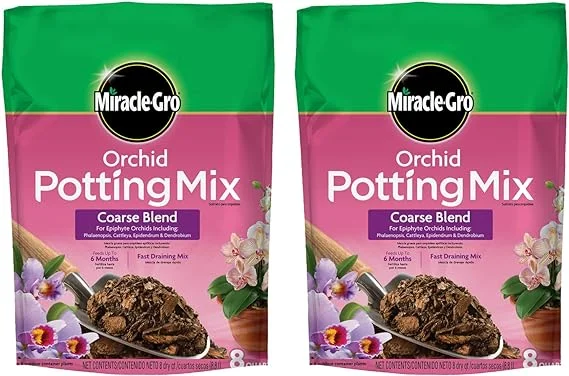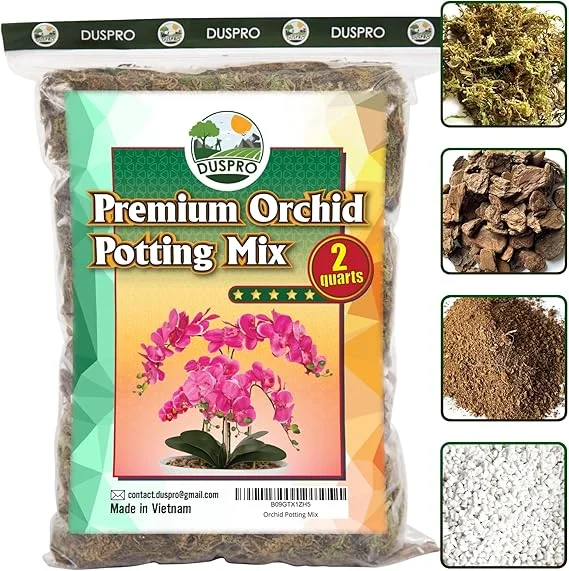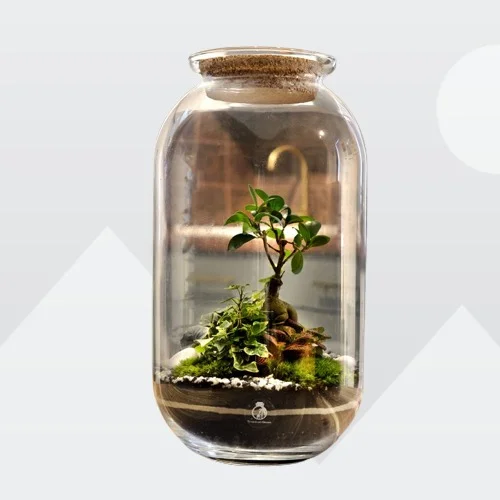Cattleya (Corsage) Orchids: Indoor Care, Propagation, Common Problems & Remedies
Some links in this post may be affiliate links
Cattleya (Corsage) Orchids thrive in bright indirect light, warm and humid conditions and moderately moist, fertile, orchids soil coupled with monthly feeding in the growing season.
Cattleya Orchids also called Catts are popular orchids with vibrant, green (light yellow-green) leaves and large, colorful blooms which can last for weeks.
Corsage Orchids bears tall and smooth stems and fleshy leaves with a smooth margin which grow from the top of a pseudobulb. Catts are sympodial orchids which bear a cylindrical rhizome from which the fleshy noodle-like roots grow.
The genus was named in 1824 by John Lindley (an English botanist, gardener and orchidologist) after William Cattley (a British merchant and horticulturalist), who was significantly involved with the trade between Britain and Russia. The genus is abbreviated C in trade journals.
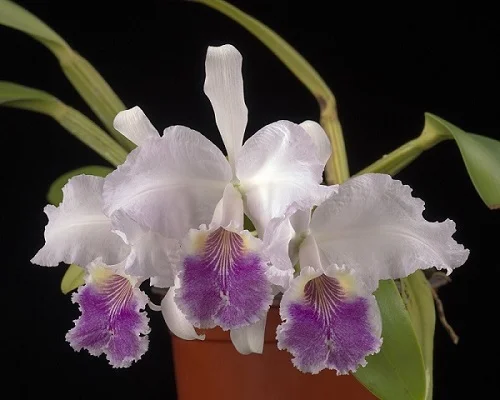
Botanical name: Cattleya
Family: Orchidaceae
Subfamily: Epidendroideae
Tribe: Epidendreae
Subtribe: Laeliinae
Common name: Catts, Corsage Orchid
Origin
Cattleya is a genus of orchids native to tropics of Costa Rica south to Argentina, where they thrive in warm and misty conditions.
Flower
The blooms in Cattleya Orchids occur in clusters of 2-6 flowers. Flowers have sepals and petals free from each other and the lowermost petal (the lip) is usually a different coloration and shape from the rest of the flower.
With good care, Catts can bloom twice a year. Most of the Corsage Orchids available are hybrids. Pink, white, red, purple, blue and yellow flowered varieties are available.
Are Cattleya Orchids toxic?
No. Cattleya Orchids are non-toxic to both humans and pets as indicated by ASPCA. They are safe to grow in a home with kids and pets.
Related Genera
Catts are related to the genera Brassavola and Laelia with which they have been used extensively in hybridization.
Where to buy
If you are looking to add this beauty to your collection, Cattleya Orchids are available online at Etsy (Link to Etsy).
How to Care for Cattleya Orchids Indoors
To care for Cattleya (Corsage) Orchid indoors, give it bright indirect light, warmth of 15-290C, humidity of 50-55% and moderately moist, fertile, orchids potting soil coupled with monthly feeding during the growing season to thrive.
Catts care need regular pruning to keep them neat and tidy and also promote blooming. Repotting is only need when they overgrow the current pot or when the potting medium is completely broken down. Keep reading for more on these growing conditions and how to achieve them.
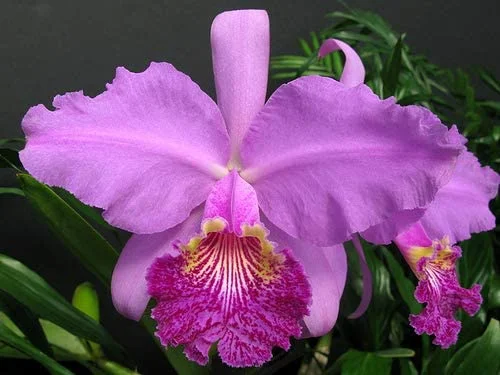
Light Requirements
Where is the best place to put a Cattleya Orchid?
Cattleya Orchid grows best in bright indirect light of about 10 hours per day. Keep it away from direct sunshine to avoid scorching the leaves.
A Cattleya Orchid that is receiving the right amount of light has yellow-green upright leaves while dark green leaves indicate that the orchid needs more light. Yellow (more yellow than green) leaves mean that the orchid is receiving too much light.
Where the natural lighting is inadequate, you may use a full spectrum grow light to supplement it.
Regularly rotate the pot to ensure that the orchid gets adequate light on all sides for even growth.
Watering
How often should I water Cattleya Orchid?
Water your Cattleya Orchid liberally in spring and summer and allow the top half of the soil to dry out between waterings. Keep the soil moderately moist but not soggy to avoid rotting, yellowing, wliting and drooping.
Decrease watering in fall and winter as growth is minimal at this time to maintain the soil slightly moist. However, do not allow the soil to dry out completely to prevent wilting and drooping leaves.
To take the guesswork out of watering Catts, check the roots. Whitish-green and plump roots indicate that the orchid is well hydrated. Whitish, thin roots indicate the orchid needs to be watered.
Use tepid, chlorine-free water as Catts are sensitive to chlorine and other chemicals dissolved in water. Avoid wetting the foliage as it can lead to fungal diseases.
Corsage Orchids unlike Lady Slippers Orchid (Paphiopedilum Orchids) are more tolerant of dry soil conditions due to the presence of pseudobulbs and their thick leaves. As such take care not to overwater as it may begin to rot.
Temperature & Humidity
Cattleya Orchids flourish in a warmth of 15-290C. Warmer days and cooler night temperatures with a difference of 10-150C are ideal for this orchid. The cool nights are essential to trigger flowering.
Make sure that there is good air circulation as these orchids cannot tolerate hot and stuffy conditions. Keep it away from drafts to avoid sudden changes in temperature which can cause leaf curl followed by leaf drop.
Catts blossom in a humidity of 50-55%. Where the air is too dry especially if temperatures are too high, the orchids may develop brown leaf tips and edges. To raise humidity, set the pot on a wet pebble tray or use a cool mist humidifier.
Do not mist the leaves as it can lead to fungal diseases. Maintain proper air flow to discourage fungal diseases.
Potting Medium
The best potting medium for Cattleya Orchid should be rich in organic matter, loose, free-draining bark soil to prevent it from getting soggy while providing the required nutrients. Most potting mixes designed for orchids are ideal for these plants.
Fertilizer
Feed your Cattleya Orchid every 4 weeks in spring and summer with an orchid's fertilizer as per the manufacturer's instructions to promote a lush growth. Withhold feeding in fall and winter as growth is minimal at this time. Do not feed an orchid that is in flower.
It is better to err on the side of underfeeding than overfeeding as overfeeding may result in loss of roots due to fertilizer burn thus death of the orchid. Overfeeding the orchid can also lead to vegetative growth at the expense of flower production.
Repotting
Cattleya Orchids bloom best when they are extremely pot-bound; they prefer to be pot-bound to enhance flowering. Therefore, only repot when growth begins to suffer; when the orchid has outgrown its pot and the new growth reaches out over the edge of the pot or when the soil has broken down completely.
Basically repotting Cattleya Orchids every 2-3 years should be adequate. Repot only when new growth begins, shortly after blooming is over. Do not repot an orchid that is in flower as it may shorten the flowering season due to repotting shock.
Use a pot with proper drainage holes or slits as the roots of the orchid need good air circulation. The pot should be only 1 size larger than the current one and use loose, free-draining bark soil to avoid getting soggy soil. Take a look at these ceramic orchid pots with a free slotted orchid pot liner on Amazon.
When repotting, shake off excess soil and trim off any dried and shrivelled pseudobulbs. The large orchids can be divided to propagate new plants.
Pruning
Pruning Cattleya Orchids is easy. Remove the dead and diseased leaves to keep it neat and also discourage pest and disease infestations.
Cut the leaves at the base with a clean, sharp pair of pruning scissors or knife and avoid unnecessary injuries. When flowering is over, cut the flower stalk 1 inch above the 3rd node from the bottom.
Occasionally clean the leaves by damp-wiping with a soft cloth to get rid of dust and discourage pest infestation.
Cattleya Orchid Propagation
Cattleya (Corsage) Orchids is propagated from the rhizome at the beginning of the growing season once flowering is over.
Propagating Cattleya Orchid from the rhizome
- Gently split the rhizome into sections while ensuring there are at least 3 shoots on each section.
- Carefully seperate the roots attached to each division from the mother root-ball. Remove the old potting soil attached to the section roots.
- Select a pot about 1-2 inches larger than the pseudobulb. Ensure that the pot has enough drainage holes and slits to prevent root-rot for the section.
- Fill the pot one thirdway with a well-draining, orchid's potting soil and moisten it lightly.
- Position the section in the center of the pot, bury the roots in the soil while ensuring that the bottom of the pseudobulb is level with the top of the soil.
- Stake each newly repotted plant to prevent it from toppling over.
- Place the set up in a warm, well-lit place away from direct sunlight to avoid scorching.
- Water the soil lightly until the sections have established their own roots after which you can begin routine care.

Cattleya Orchid Problems & Solutions
Cattleya (Corsage) Orchid problems are leaf fall, lack of blooms, limpy & droopy leaves, black & dying leaf tips, pests and diseases among others. Keep reading for more on these problems and how to fix them.
Leaf fall
Why are the leaves falling off my Cattleya Orchid?
The leaves are fall off your Cattleya Orchid due to inconsistent watering, soggy soil, too little light, temperature stress or aging.
How to fix it
Inconsistent water: Do not water on a schedule. Water when the top half of soil feels dry to the touch. Never allow the soil to dry out completely.
Soggy soil: Use a pot with proper drainage and a well-draining soil to prevent waterlogging.
Too little light: Position the orchid in bright indirect light of about 10 hours per day or use a grow light if the natural lighting is not sufficient.
Temperature stress: Keep the orchid away from drafts emanating from windy doors, drafty windows, AC units, heat sources among others to prevent sudden changes in temperatures.
Aging: This is a natural process. As the lower leaves mature, they turn brown, die and fall off.
Lack of blooms
Lack of blooms on Cattleya Orchid is caused by too little light, nutrients deficiency, dry air, or lack of temperature variation.
How to get a Cattleya Orchid to bloom
Too little light: Position the orchid in a brighter spot or use a grow light to supplement inadequate natural light.
Nutrients deficiency: Feed the orchid every 4 weeks in spring and summer with a water-soluble orchid fertilizer. Do not feed in fall and winter since growth is reduced.
Dry air: Set the pot on a wet pebble tray or use a cool mist humidifier to increase humidity.
Lack of temperature variation: Expose the orchid to cooler nights to trigger blooming; a difference of 10-150C is needed.
Limpy & droopy leaves
Limpy and droopy leaves on Cattleya Orchid are caused by underwatering, temperature stress, and hot sunshine.
How to fix it
Underwatering: Water the orchid when the top half of soil feels dry to the touch. Do not allow the soil to dry out completely.
Temperature stress: Keep the plant away from drafts to avoid extreme temperatures.
Hot sunshine: Place the plant away from hot sunlight or use a light curtain to filter the light.
Black, dying leaf tips
Black, dying leaf tips on Cattleya Orchid are caused by use of hard water or salts buildup from fertilizers.
How to fix it
Hard water: Use chlorine-free water like rain water, filtered water or distilled water.
Salts buildup: Flush out accumulated salts from the soil by running a stream of water through the soil until it comes out through the drainage holes.
Brown, hard, dry leaf spots
Brown, hard and dry leaf spots on Cattleya Orchid are due to exposure to direct sunshine; these are scorching marks. Move the orchid to a shadier spot or shield it from hot direct sunshine to prevent sunscorch.
Dark-green leaves
Dark-green leaves on Cattleya Orchid indicate that the orchid is not getting enough light. The leaves of a Catt that is receiving the correct light should be yellow-green. Position the orchid in a brighter spot where it will receive bright indirect light or instal a grow light if the natural lighting is not adequate.
Yellowish leaves
Yellowish leaves on Cattleya Orchid indicate that the orchid is getting too much light. The leaves of a Catt that is receiving the correct light should be yellow-green. Move the orchid to a shadier spot and ensure it will receive bright indirect light away from direct sunlight or too much light.
Pests
Common pests on Cattleya Orchid are spider mites, scales and mealybugs which are prevalent in dry air conditions.
How to fix it
- Isolate the affected plant to prevent spread to the rest of the plants.
- Treat the infested plant with a horticultural oil as per the manufacturers' recommendations.
- Regularly check underneath and between the leaves for these pests and carry out timely control measures.
- Maintain the plant well pruned and upscale humidity to discourage the pests infestation.
Diseases
Cattleya Orchid is prone to powdery mildew which presents as mold on the leaves. The disease is common in overwet conditions coupled with poor air circulation.
How to fix it
- Cut and discard the affected leaves to minimize spread of the disease.
- Improve ventilation and ensure that there is good air flow for the orchid.
- Do not mist the orchid; employ alternative techniques to elevate humidity.
- Take care not to wet the foliage during watering.
You liked it? Share on social media.
Recommended
Amazon Associates Disclosure
Homeplantsguide.com is a participant in the Amazon Services LLC Associates Program, an affiliate advertising program designed to provide a means for sites to earn advertising fees by advertising and linking to amazon.com.

